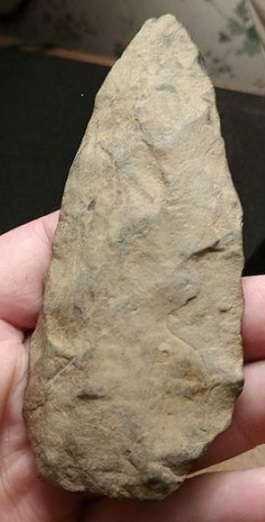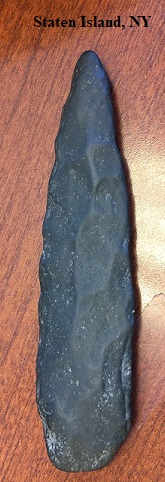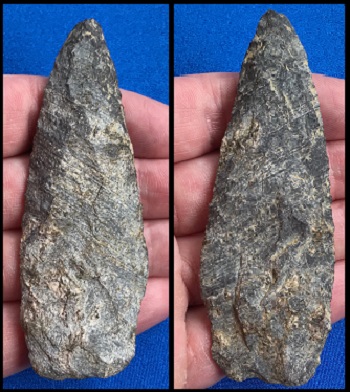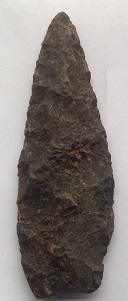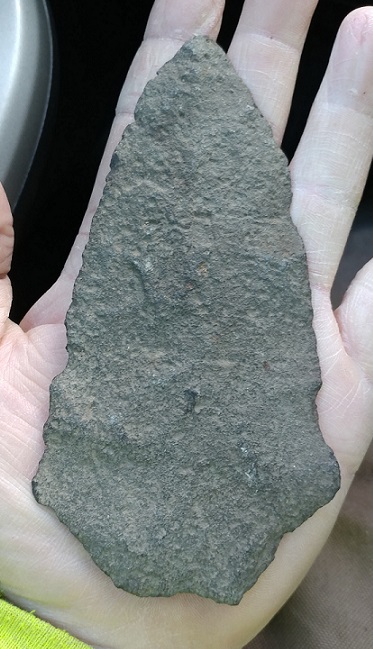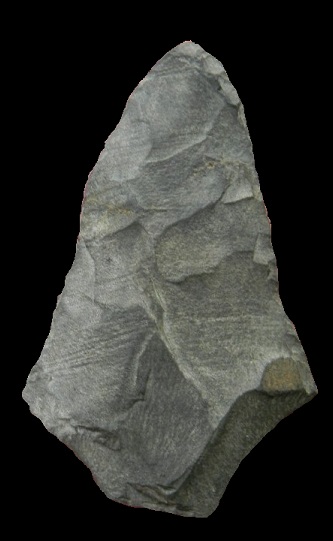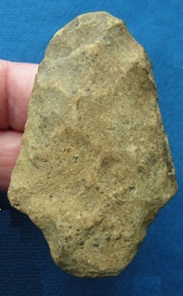Other Websites with Detailed Information:
Name Details:
Named By: Dena F. Dincauze
Named For:
Date Identified: 1968
Type Site: Cremation cemeteries studies of eastern Massachusetts
Mansion Inn Blade
Cluster:
Commonly Utilized Material:
Date:
Cultural Period:
3,700 - 2,700 B.P.
Early
Woodland
Neoglacial to Medieval Warm
Glacial Period:
Culture:
Outline is Representative of Size and Shape:
Description of Physical Characteristics and Flaking Pattern:
This is a medium to large triangular stemmed point with an elliptical cross section. The blade is broad and excurvate with many examples slightly curving back in at the shoulders. The shoulders
are at an upward angle. The stem is short and may vary from slightly contracting to slightly expanding. The base ranges from straight to slightly concave. This point has a random flaking
pattern.
Size Measurements: see Coburn, Dudley, and Watertown pages for
measurements.
Distribution:
Distribution Comments:
This point is primarily found in Massachusetts and into Maine and eastern New York.
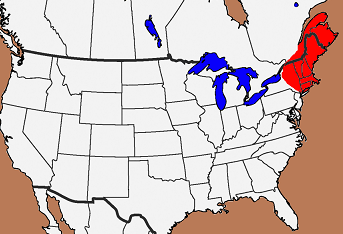
Additional Comments:
This is considered to be a preform for the Susquehanna Broad. It is technically related to the Wayland type (Justice, 1987).
Variants include: Coburn, Dudley, and Watertown
Other points in this Cluster:
Point Validity: Valid Type
Dincauze is a renowned anthropologist who has specialized in prehistoric archeology of eastern and central New England and was a professor at the UMass Amherst. This point was named in her book on the Atlantic Phase culture and has many professional references. This is considered a valid type.
.
Age Details:
Pictures Provided By:
Doreen
Terry Summers
Philip Malachoski
KirkKirk
References: (See Reference Page, Entry Number):
23, 30, 37
Mansion Inn Blade Projectile Point, Mansion Inn Blade Arrowhead

